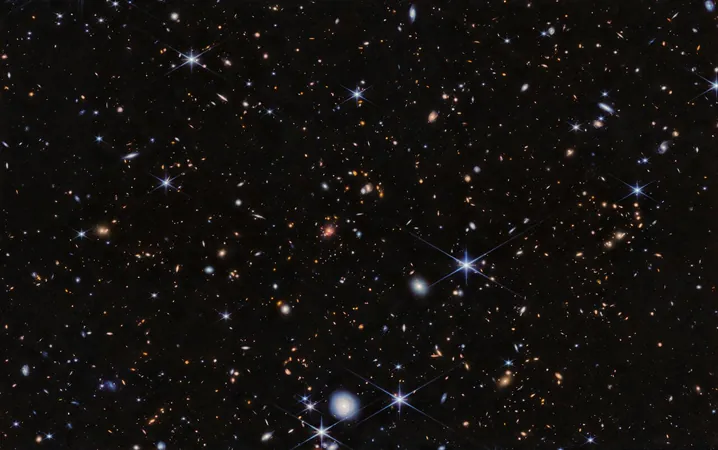
The Milky Way's Disturbing Anomaly: What Makes Our Galaxy So Unique?
2024-11-29
Author: Noah
Galactic Anomaly Revealed
Recent research has unveiled a perplexing anomaly that distinguishes the Milky Way from its cosmic counterparts. A dedicated team of scientists analyzed extensive data from the Satellites Around Galactic Analogs (SAGA) survey, which meticulously compared the Milky Way with 101 similar galaxies in terms of mass.
The eye-opening discovery: the Milky Way houses unexpectedly few minor satellite galaxies compared to its peers, and notably, a number of these satellites have mysteriously halted their star formation processes.
"This presents us with a fascinating puzzle," declares Professor Risa Wechsler, a Stanford astrophysics expert and co-founder of SAGA. "What specific factors within the Milky Way have contributed to the cessation of star birth in these smaller, lower-mass satellites?"
A Unique Evolutionary Path
These findings not only highlight the distinct evolutionary narrative of our galaxy but also compel astronomers to rethink existing theories about galaxy formation on a universal scale.
According to Wechsler, “Our study confirms that we can't simply limit models of galaxy formation to the Milky Way. Understanding the broader distribution of similar galaxies is crucial in developing a comprehensive view.”
At the heart of this groundbreaking research lies the enigmatic dark matter, which constitutes approximately 85% of the universe's total mass but has yet to be directly detected. Prior studies suggest that massive dark matter halos are essential for galaxy formation, creating gravitational wells that allow normal matter to consolidate and spawn celestial bodies.
Could it be that the Milky Way's unique mixture of ancient satellites, which no longer produce stars, alongside newer, active ones that have only recently integrated into our galaxy's dark matter halo, is the key to this mystery? Wechsler proposes that this may indeed be the case.
Upon scrutinizing 378 small satellite galaxies orbiting the 101 larger galaxies, researchers discovered a striking contrast: while around half of the Milky Way's satellites were inactive in star formation, most other galaxies continue to boast vibrant stellar nurseries.
A Conundrum Worthy of Exploration
The big question then looms: What sets our Milky Way apart from the crowd?
Wechsler suggests delving deeper into the behavior of dark matter at scales smaller than the Milky Way, particularly in regards to the smaller dark matter halos that envelop these mini-galaxies.
Additionally, this intriguing revelation opens the doors to further explorations into galaxy dynamics and the role dark matter plays in shaping the universe. Could a deeper understanding of these processes lead us to the brink of unlocking the secrets of galaxy formation?
As astronomers continue to peel back the layers of this cosmic conundrum, the quest to comprehend what makes our galaxy distinct from the rest stands as a tantalizing frontier in modern astrophysics. Keep your eyes on the sky; the mysteries of the Milky Way are just beginning to unfold.









 Brasil (PT)
Brasil (PT)
 Canada (EN)
Canada (EN)
 Chile (ES)
Chile (ES)
 España (ES)
España (ES)
 France (FR)
France (FR)
 Hong Kong (EN)
Hong Kong (EN)
 Italia (IT)
Italia (IT)
 日本 (JA)
日本 (JA)
 Magyarország (HU)
Magyarország (HU)
 Norge (NO)
Norge (NO)
 Polska (PL)
Polska (PL)
 Schweiz (DE)
Schweiz (DE)
 Singapore (EN)
Singapore (EN)
 Sverige (SV)
Sverige (SV)
 Suomi (FI)
Suomi (FI)
 Türkiye (TR)
Türkiye (TR)